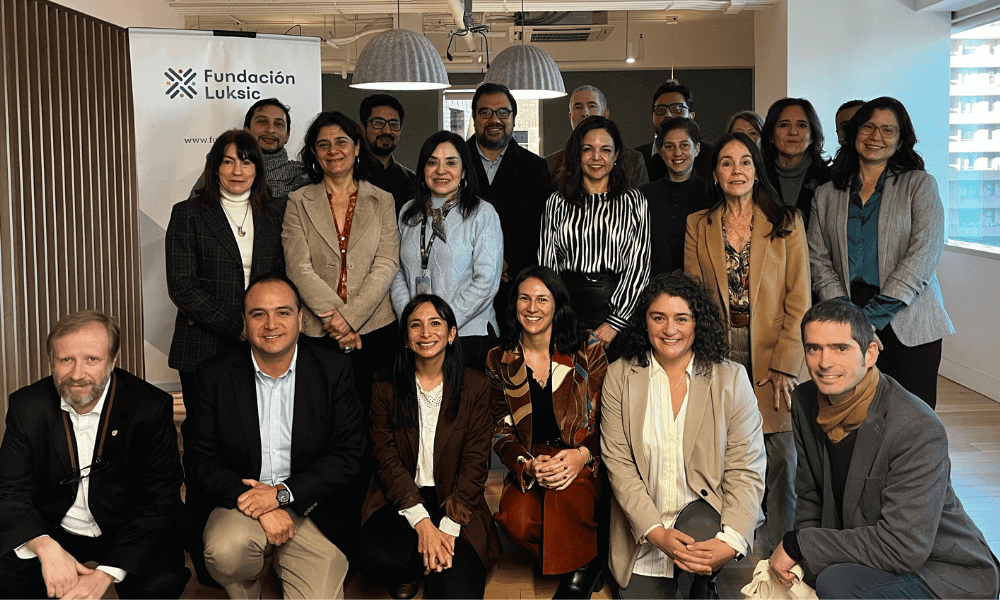Martín is finishing his senior year at a technical high school, and like thousands of students, he faces a big question: What now? Should he pursue higher education or enter the workforce? Can he afford to continue studying? Does he have access to funding? Without clear answers, the decision becomes even harder. There are many options available to Martín, and a wealth of information exists—but for some reason, it isn’t reaching the intended audience.
This gap is precisely what Fundación Luksic addresses in its Policy Brief titled “Bringing Public Policy Closer to the User. Overcoming Information Asymmetries: User Experiences in Educational Initiatives in Chile”, presented at the breakfast event to representatives from various sectors.
The event focused on lessons learned from two education programs: Redes Educativas para la Mejora del Aprendizaje (REMA) and Aspiraciones sobre el Futuro (ASF). These programs show how user-centered design and effective implementation can help reduce information asymmetries.
REMA strengthens teaching and leadership skills through a methodology that includes workshops, classroom observation, and pedagogical leadership training. ASF, on the other hand, provides students with personalized tools to support informed decisions about their educational future—such as surveys, mentoring, and assistance accessing higher education.
The results are promising. REMA has been positively received by school leaders and teachers as a useful tool to enhance classroom practices. Meanwhile, ASF has increased the likelihood that students who receive mentoring and information will register for and take the university entrance exam by up to 12.8 percentage points.
“The design of a social service must be not only evidence-based, but also rely on high-standard implementation to ensure initiatives effectively reach their target audiences,” explained Isabella Luksic, CEO of Fundación Luksic, during the event.
Throughout the session, participants reflected on how to close the gap between the design and implementation of public policies—particularly in education—in order to offer growth and development opportunities for students.
The discussion centered around the question: What enabling factors should be prioritized as urgent policy for the next five years? On this topic, Gino Cortéz, Executive Secretary of the Education Quality Agency, stated, “Developing human capital is key—that is, having trained people capable of implementing these policies at the macro, meso, and micro levels, from the school level to education providers and policy itself. We must also move toward a coherent system structure.”
Francisca Díaz, Regional Teacher Strategy Coordinator at UNESCO, emphasized that teachers cannot do it alone: “Teaching must be a shared responsibility across society. Looking ahead five years, I envision a more hands-on, school-based effort—supporting educators not just through policy or rhetoric, but through real, practical accompaniment. Teaching today is extremely difficult, and our teachers need concrete, real support.”
The full document is publicly available on the Foundation’s website: www.fundacionluksic.cl

